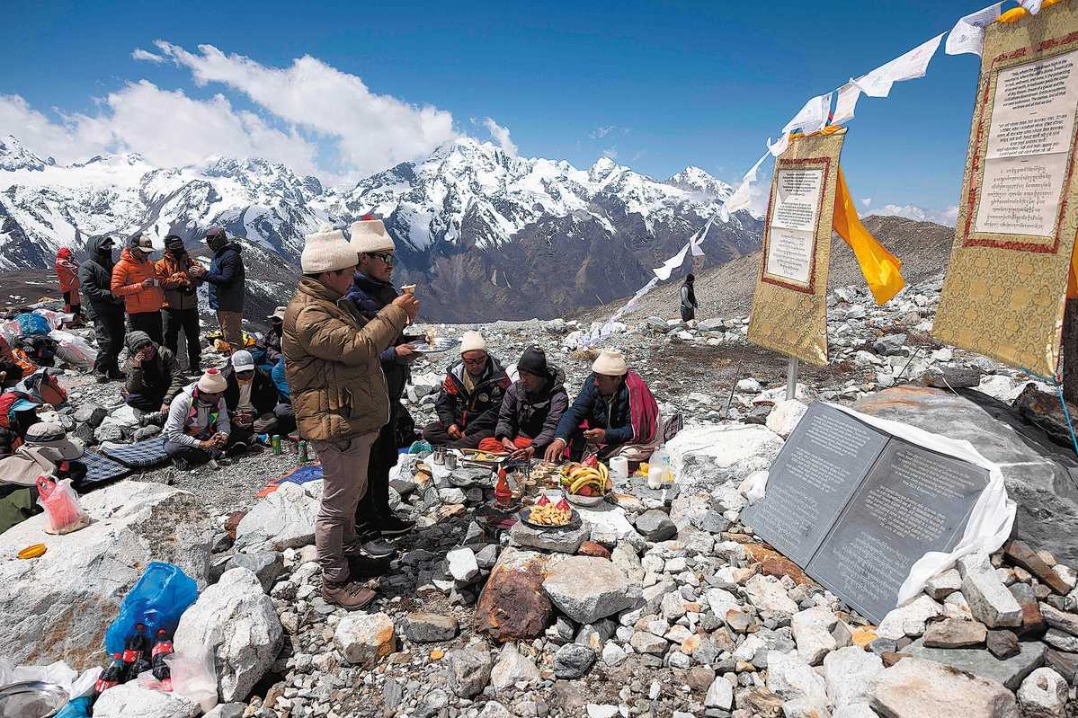'Steel camel caravan' deepens regional connectivity
Freight train helping goods from Central Asia reach major global ports directly via Tianjin Port and enabling cargo from Japan, South Korea and Southeast Asia to arrive at trade destinations
By REN QI in Almaty, Kazakhstan | China Daily Global | Updated: 2025-06-17 09:17

Over 2,000 years ago, Zhang Qian was sent on a mission to Western regions, opening up the ancient Silk Road that connected the East and the West.
This marked the beginning of bilateral exchanges between China and Central Asia, a relationship that has lasted for over two millennia.
Through mutual learning and support, both sides have left behind remarkable stories and legends in the history of human civilization.
Fast forward to today, the long whistle of a train signals a new chapter in this enduring relationship.
On May 20, a freight train to Central Asia loaded with automobile parts, construction materials, and other goods left from Tianjin Port, officially marking the departure of the first direct train to Tashkent, Uzbekistan, in 2025.
This so-called "steel camel caravan", spanning 5,018 kilometers, is more than an ordinary international freight train operation.
It is a vivid example of the China-Uzbekistan joint construction of the Belt and Road Initiative, injecting new momentum into deepening connectivity across the Eurasian continent and promoting regional economic cooperation.
As a double landlocked country, Uzbekistan has long faced logistical constraints due to limited transportation channels. The launch of this freight train creatively integrates the maritime advantages of Tianjin Port with the land-based network of Central Asia, establishing a seamless "sea-rail intermodal" transportation system.
This innovative logistics solution not only allows goods from Central Asia to reach major global ports directly via Tianjin Port, but also enables cargo from Japan, South Korea and Southeast Asia to penetrate deep into Central Asia through this corridor.
The "steel camel caravan" is emblematic of multilateral cooperation, weaving a dense network of trade and collaboration.
From Xi'an to Chongqing, from Yiwu to Tianjin, the expanding "circle of friends" of the China-Europe freight trains reflects the vitality of the Belt and Road Initiative, which has become a powerful driver of connectivity and economic growth across regions.
Sadvakkas Seitzhanov, general manager of the Chinese branch of KTZ Express, a subsidiary of Kazakhstan's national railway company Kazakhstan Temir Zholy, closely monitors the freight data of trains departing from Xi'an every day at Xi'an International Trade and Logistics Park. If necessary, he directly contacts the Kazakhstan headquarters for coordination.
According to data from the Chinese Ministry of Commerce quoting KTZ, the China-Kazakhstan railway transported 2.8 million metric tons of goods in January this year, marking an 18 percent year-on-year increase. A previous report showed that the cargo volume between the two countries in 2024 reached 32 million tons, reflecting a 13.1 percent year-on-year growth.
Seitzhanov said KTZ established an office in Xi'an because the northwest city has become a key transfer hub and warehouse, facilitating the movement of goods between China, Central Asia and even Europe.
"We adjust the shipment schedule based on real-time market demand, share information about the train service, and provide one-stop service to our clients," he said.
The significance of this collaboration extends beyond logistics.
























